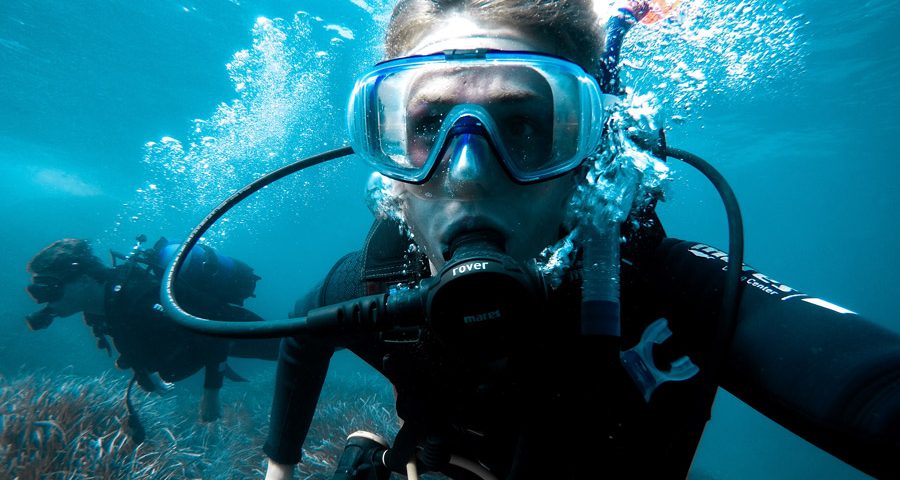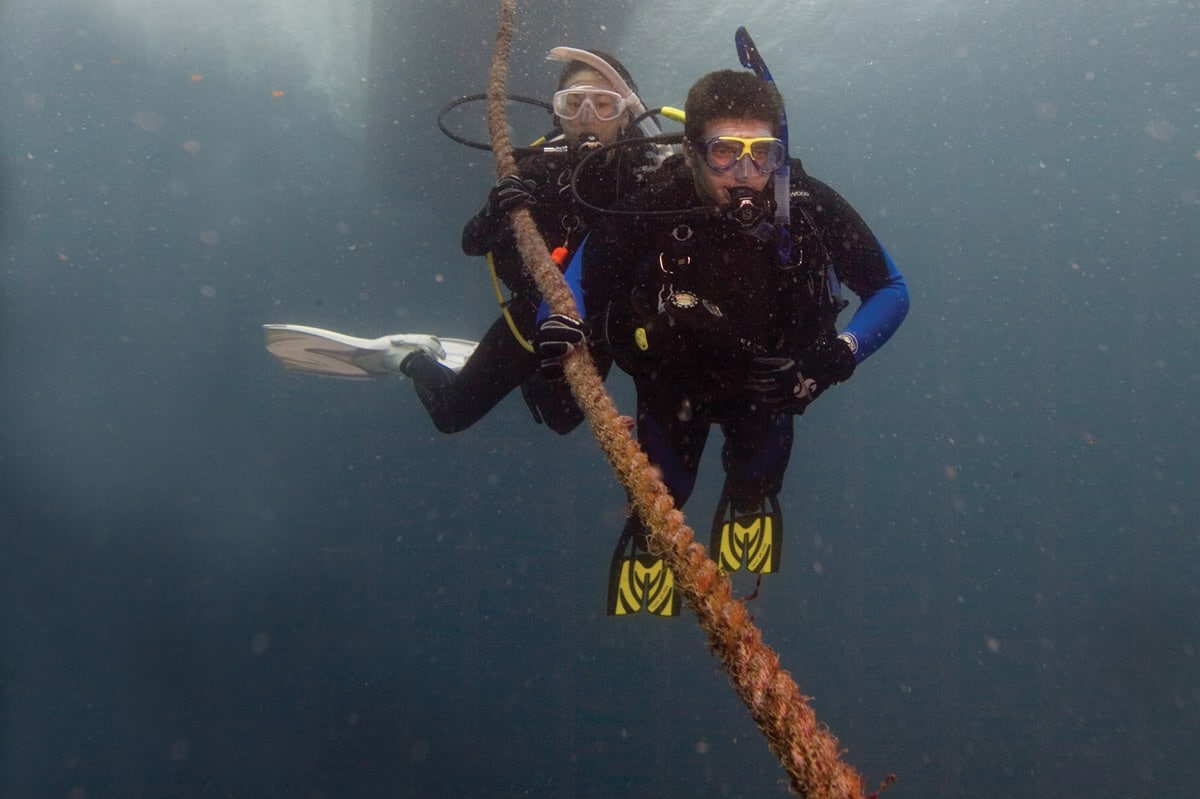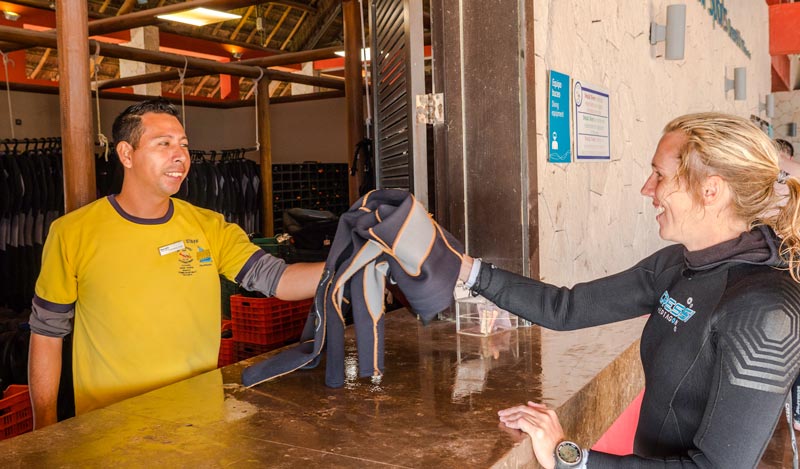The goal of the scuba safety stop is to help our body eliminate the nitrogen bubbles. So, it is also very important to ascend slowly. Some divers ascend at a maximum rate of 30 feet (9 meters) per minute, others maintain the habit of ascending at 60 feet (18 meters) per minute. Many prefer to rely on technology and follow their dive computer’s instructions.
When the diver reaches 15 feet (4,5 meters), the ascent should be stopped. If you follow an anchor line, it will help you to maintain your depth. You can hold on to it and maintain neutral buoyancy during the three minutes scuba safety stop.
If you don’t have an ascent line, check that you are maintaining your depth and time by using the indications of your depth gauge, or your dive computer.
During this time, you should inflate the Submersible Marker Buoy (SMB) to indicate your position to the dive boat that is going to pick you up, as well as to other boats that navigate on the surface. In this way, they will be able to take into account your presence, and they will know divers will emerge in a short time.







